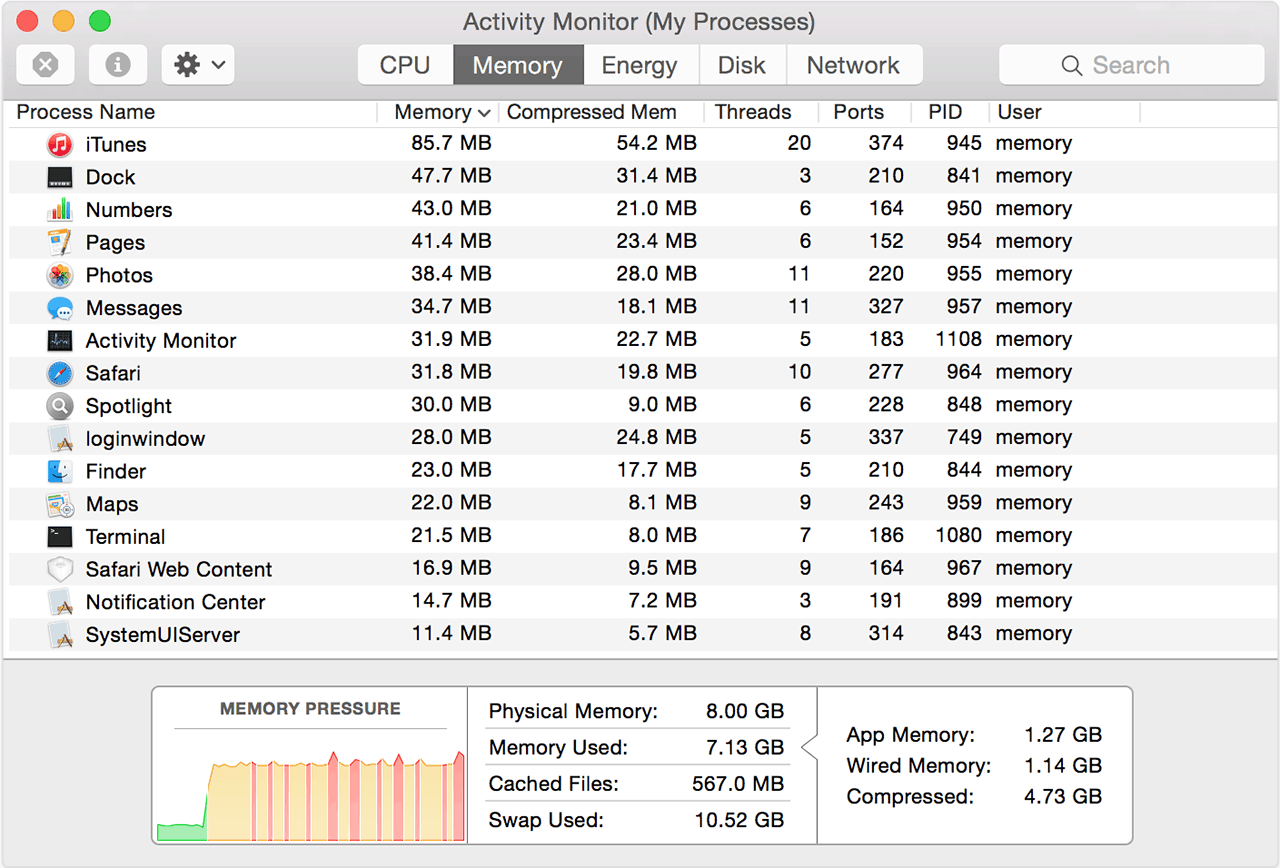

Now that you know how much of your Mac’s processing power system processes and third-party apps use, how do you lower CPU usage? You can start by force-quitting unused applications. You should now see the CPU usage of the kernel_task process on your Mac. In the second of the View menu, make sure All Processes is the selected option.Keep the Activity Monitor window open and click View on the menu bar.If you don’t find the kernel_task process in Activity Monitor, here’s what you should do. The CPU usage of apps and services is measured in percentage and arranged in descending order (i.e. Finally, switch to the CPU tab and focus on the %CPU column to check for apps and processes actively using your Mac’s CPU.On your Mac’s homepage, click on Go in the menu bar and select Utilities.
MAC MEMORY CPU MONITOR MAC
You’ll need to launch the Mac Activity Monitor to check the CPU usage of the kernel_task process and other apps. But first, let’s check the CPU the kernel_task process is using

The primary function of the (kernel task) process is to regulate the temperature of your Mac’s CPU.Įvery time you power on your Mac, kernel_task is one of the system processes that macOS starts automatically. Think of it as your MacBook’s hypothalamus (a part of the human brain that controls body temperature). The kernel_task process is at the core of your Mac’s operating system.
MAC MEMORY CPU MONITOR FREE
You get one free fix, so you can test it out fully before buying a subscription.īefore you proceed, we recommend taking a moment to understand what the kernel_task process is and how it impacts CPU usage on your Mac. That’s how easy it is to remove apps with MacKeeper. Look through the applications, and select what you want to remove.With MacKeeper, you can do that in just a few clicks, without leaving any files or folders behind. If you notice an app using a lot of CPU cycles, you might simply want to uninstall it. In this guide, we’ll walk you through the process of reducing high CPU usage induced by the kernel_task process on your Mac. But you don’t have to sweat it, though the problem is fixable. If this high CPU usage is left unchecked, it could result in damage to some internal components of your Mac. Annoying, right? The situation becomes even more frustrating when your Mac becomes slow and starts to overheat. Imagine not being able to use your super expensive MacBook because a strange system process is eating up a sizable amount of available CPU.


 0 kommentar(er)
0 kommentar(er)
